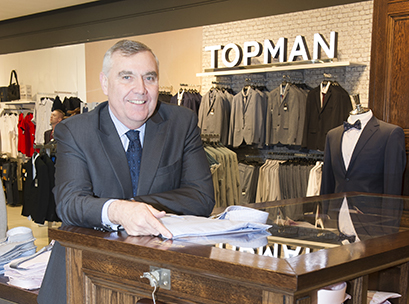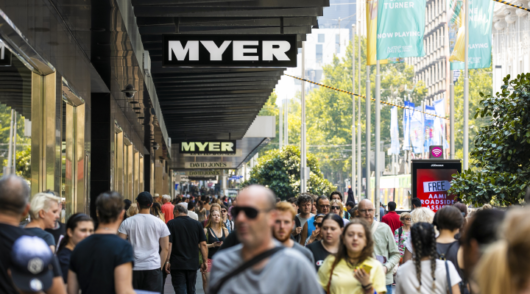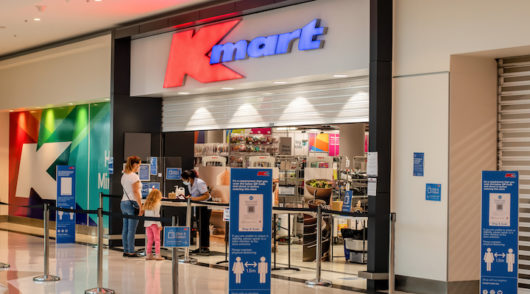
Former Myer CEO Bernie Brookes believes Australian department stores lack a sense of theatre and fun and that this is one reason they’re struggling to retain customers and grow sales.
“You still walk into department stores and discount department stores here and they’re as boring as batshit, they really are,” he told attendees at an industry event in Melbourne on Wednesday, before asking, “How do you effectively develop theatre and fun?”
Brookes, who left his role as chief executive of Edcon in South Africa earlier this year to take up a post at Swinburne University’s Customer Experience & Insight (CXI) Research Group, didn’t provide a silver bullet answer.
Instead, he highlighted several key areas where he thinks retailers in Australia could do better, including customer segmentation, visual merchandising, speed to implement innovation and omnichannel.
“Invariably, when you go into Target, Myer or David Jones, it’s very hard to understand [who] they are trying to serve…the top end or bottom end,” he said.
“They have beautiful cosmetic halls but then … there’s a $30 polo or top. A lot of it just doesn’t make sense.”
Segmentation, omnichannel
Brookes said segmentation is often underestimated as a means to an end, but he said it’s crucial for retailers to know who they are trying to serve.
He also said that Aussie retailers need to become more channel agnostic like retailers in South Korea, where consumers can use their phones to scan images of grocery items on a wall in the subway, buy them and collect them at the end of their journey as they leave the station.
However, Brookes acknowledged that even the “poster boy” for omnichannel retailing, John Lewis, is not immune to changing economic conditions in retail. The UK-based business recently reported a 99 per cent drop in first-half profits, which John Lewis Partnership chairman Sir Charlie Mayfield attributed to heavy discounting at other retailers.
“These are challenging times in retail … gross margin has been squeezed in what has been the most promotional market we’ve seen in almost a decade,” The Guardian reported Mayfield as saying earlier this month.
Online doesn’t compensate
Brookes noted that while many retailers – John Lewis chief among them – are now seeing a significant portion of sales occurring online, it doesn’t make up for the loss of in-store sales.
“If you look at Kmart, Target, Big W, Woolworths, Coles, David Jones and Myer … just about all their growth [in the last six-month period] has come from online, but the growth in online is not compensating for the decrease that’s occurring in bricks-and-mortar,” he said.
Brookes cited three main reasons for this discrepancy. While customers may be shifting more of their spending online, they have less cash to burn overall, so they are more likely to look for “value”, he said. They also have more options to choose from when they do spend, and they are less likely to make impulse purchases online than in-store.
“The answer will be to continue to invest in omnichannel but not over-invest in it,” he said, cautioning retailers that they risk forgetting about the fundamentals of the retail if they focus too much on omnichannel.
However, he also reminded retailers that the industry has been disrupted many times before, first with the move to self-service in supermarkets, then with barcodes and currently with the rise of digital.
“The disruption that’s occurring [now] is a disruption, but it’s part of the various evolutions in retail that occurred over a period of time,” he said.
“To some extent, what’s happened in the past provides good learnings for what needs to be done in the future.”
The event on Wednesday was hosted by Swinburne University’s CXI Research Group and featured presentations by the group’s co-director and associate professor Sean Sands and Decision Design director Tara Ness.







